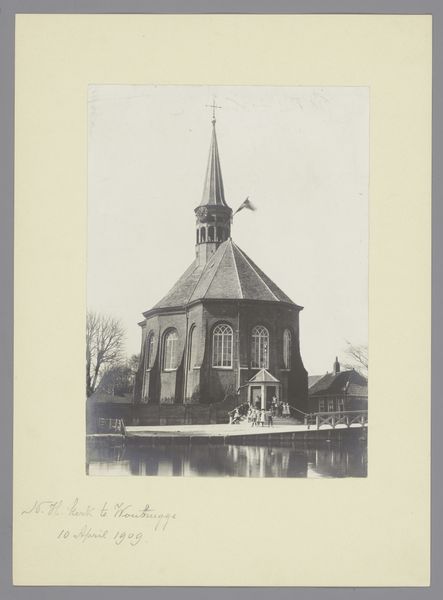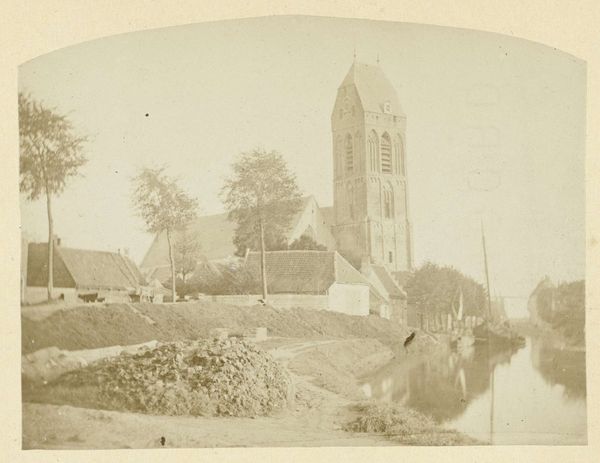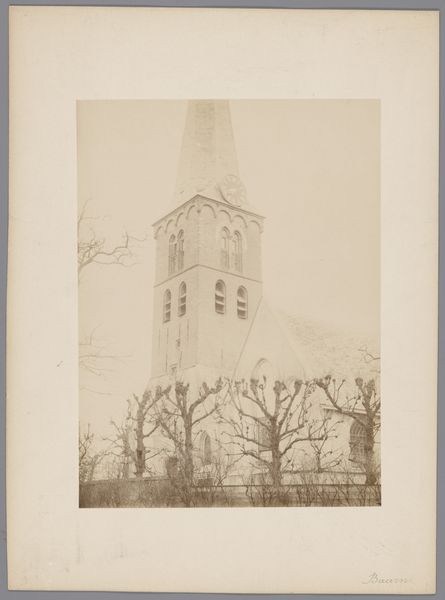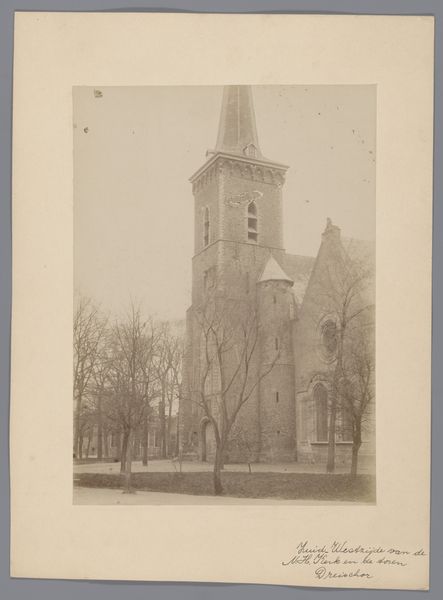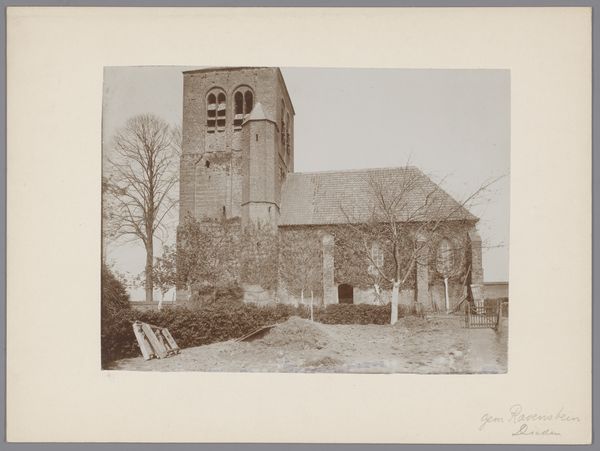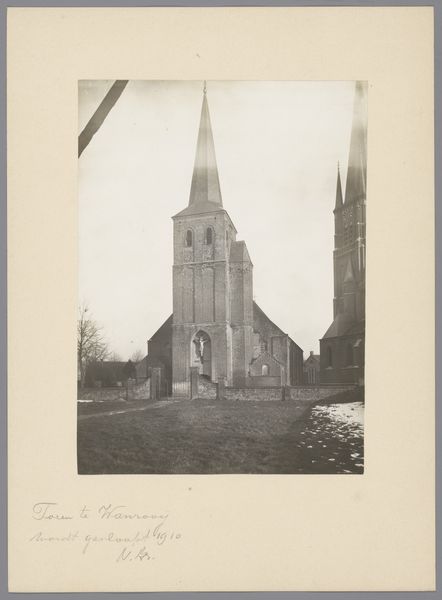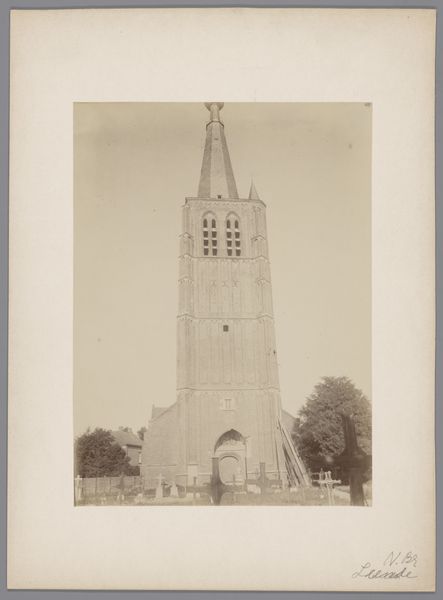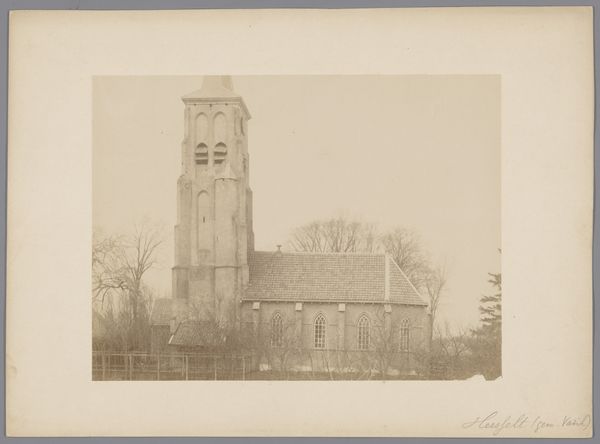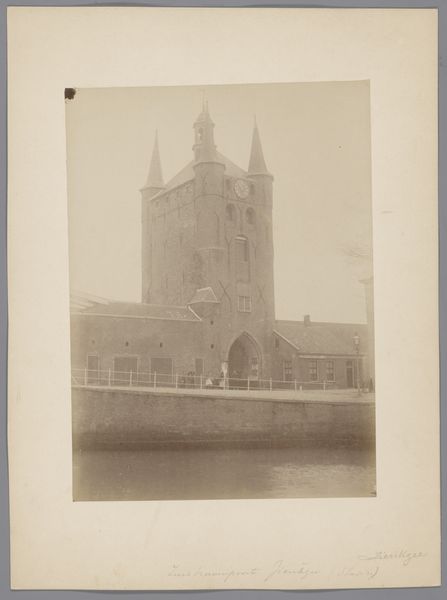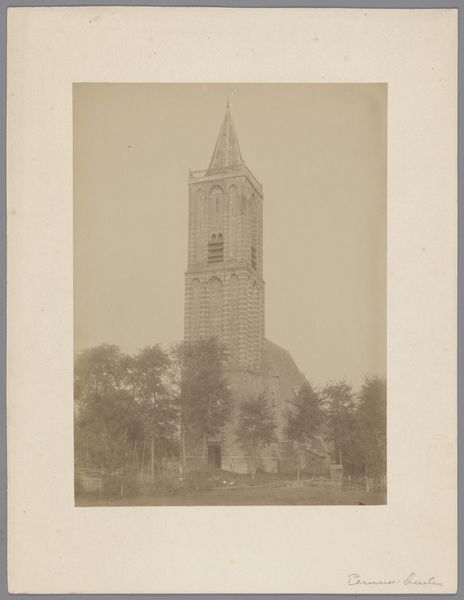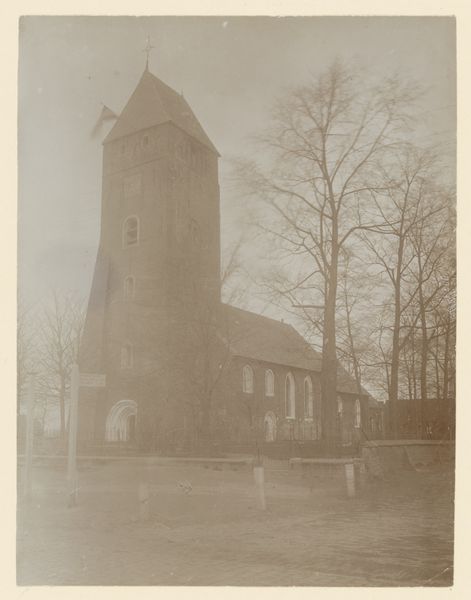
Mensen in klederdracht poserend voor de kerktoren van Kloetinge 1888
0:00
0:00
photography, gelatin-silver-print
#
portrait
#
dutch-golden-age
#
landscape
#
photography
#
gelatin-silver-print
#
realism
Dimensions: height 140 mm, width 100 mm, height 302 mm, width 250 mm
Copyright: Rijks Museum: Open Domain
Curator: This is a gelatin silver print from 1888 by Henry Pauw van Wieldrecht, titled "People in traditional clothing posing in front of the Kloetinge church tower." Editor: It strikes me as remarkably still, almost frozen in time. The sepia tones lend a profound sense of history, while that church tower dominates the composition, a stoic monumentality softened only slightly by the gathering of people in the foreground. Curator: Absolutely, the sheer scale of the church in relation to the people immediately speaks to the social hierarchy present in 19th-century Dutch society. Photography at this time also involved a great deal of staging, from carefully selected attire to laboriously lengthy exposures which necessitated subjects remaining perfectly still, something we should acknowledge. Editor: Those details of pose are fascinating, aren't they? You can sense the constraint of the era and its impact on their bodies. Their clothing almost becomes armor. Are we seeing a display of community identity and adherence to tradition, in a period of cultural transition? Curator: Quite possibly. The photograph, itself an increasingly popular technology in the late 1800s, would have served as both a commodity and as an artifact for the subjects involved. Looking at the textures, especially within the dresses and suits of the people assembled, reveals the craftsmanship in textile production – a process reliant on materials and skill sets integral to the regional economy. Editor: The architecture offers another entry point. That austere facade, likely funded and built by local powers, really frames those standing below. And note that reflecting pond -- this composition subtly communicates ideas of power and faith at a specific historical moment. Considering issues of religious identity alongside shifting socioeconomic currents makes this a very interesting image. Curator: Precisely, and through the materiality of the print, we also encounter notions of archiving, preservation, and even a subtle sense of photographic realism employed to highlight elements of that local tradition and economy. Editor: Thinking about it all together, the architecture and fashion displayed offer us powerful symbols for considering themes such as class and community. Curator: Indeed. Thank you for allowing us a moment to consider it more fully. Editor: My pleasure, what a rich photo.
Comments
No comments
Be the first to comment and join the conversation on the ultimate creative platform.
